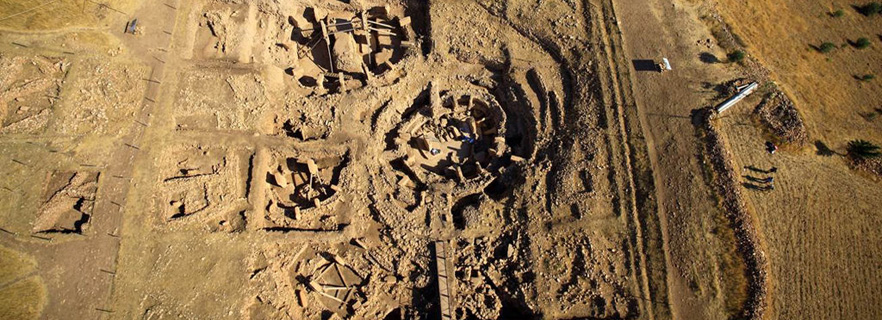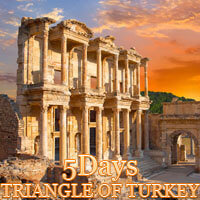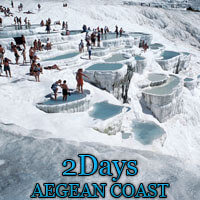 Gobekli Tepe
Gobekli Tepe
It all started with a piece of oak stone found under the ground by a farmer who ran wildfire on a typical day in 1983!
The old farmer was unaware that he would start one of the world's most 'mysterious' archaeological excavations.
The work initiated in 1996 under the supervision of the Sanliurfa Museum Directorate under the guidance of the German archaeologist Harald Hauptmann resembled an ordinary archaeological work at the beginning! As the excavation continued, it was hoped that the findings would illuminate the question marks as expected from a classical archaeological survey.
But the findings, which were supposed to lead to question marks, began to confound, on the contrary! As the excavation area began to evolve, the archaeologist's astonishment grew even more! The resulting structures, sculptures and icons were incompatible with anything we knew about human history!
On April 23, 2008, The Guardian's headline described the confusion quite well: "The Archaeologists Are Stunned by the Excavation Field!"
The reputation of the Göbekli Tepe, 17 km east of Şanlıurfa, spread to the world! The news about the topic and the cornerstones began to multiply exponentially! Everyone started talking about the Gobekli Tepe, where no historian and archaeologist could provide a satisfactory explanation!
What is it?
The roundabout was confusing because, first of all, it was exactly 12,000 years old!
It was all about what we know so far about human history! It was a book that would have thrown tens of thousands of books and hundreds of thousands of articles!
Because the archaeological excavations we have made up to now and the history we have developed based on it, says that mankind is a baby that has not even passed by 12,000 years ago, even in the age of 'crawling'!
According to the history books, the people living in those times had to be a 'herd' that did not even survive, living in a language, religion, culture, art, living, still hunting and gathering plants.
However, on the Göbekli Tepe there were 20 carefully built and carefully decorated temples of 8 to 30 meters in diameter, created by erecting huge rocks on the foot! There were huge T-shaped sculptures of 3 to 6 meters in size, reaching 60 tons of weight in the temple!
History's knowledge is upsetting!
In classical history science, the great transformation of humanity In the 10th millennium, it was assumed that agriculture had begun!
The agrarian settled life, the settled life, also brought culture, art and religion, "civilization", into the "thousands of years".
The order of the classical civilizations was as follows:
Sumerian Civilization (IV. 4000): Dicle and Euphrates
Egyptian Civilization (3500 BC): Nile River
Maya Civilization (2600 BC): South America
Indian Civilization (2500 BC): Indus River
Chinese Civilization (1500 BC): Yellow River
Note that even the Sumerian Civilization, which is believed to be the first community known as the first civilization and has the capacity to make stone constructions, It appears to have appeared in 4000 years!
How, then, could the constellations be constructed at this size in an age 7,000 years before the Sumerians, when mankind is still thought to have learned new ways to attach sharp stones to the ends of arrows and harpoones?
Scientists have already asked the same questions for "Stonehenge" in England and "Pyramids" in Egypt! The question was, "How can humanity build things up in such an age when technology is so backward?", The main curiosity!
The findings of Göbekli Tepe made these questions even 'meaningless'!
Because the temples found in Şanlıurfa were 7000 years old from Stonehenge and 7500 years older than the pyramids!
Some of the stones were much stronger than in Stonehenge, and while the Stonehenge stones were roughly carved and featureless, the goby hill was equipped with fine paintings and treatments!
National Geographic researcher, who studied giant rock-sculptures on Göbekli Tepe, found the following sentence summing up the issue in the documentary about the subject: "The people living in this period can do these temples is like building a Empire States with toy bricks in the hands of a three-year-old child!"
Understood is difficult symbolism!
We can say that the Göbekli Tepe will remain a "mystery" for a long time if mankind has already resolved Sumerian and Egyptian literature and uses these written texts to understand these societies.
Because there are no "written" findings about these human communities that lived 12 thousand years ago!
They lived so far in our day that there is no answer we can give to questions such as "Who did they believe, how were they living and what would they think?"
It is difficult to solve the meaning of the motifs on the rocks. All of the columns in the figure are depicted as 'human form'. Giant people who put their hands on their groin. Again, the figurine figure in Göbekli Tepe, considered the oldest sculpture in the world, depicts a person who once again put their hands together in their groin. Nobody knows what these and similar symbolisms mean!
Moreover, the mystery and obscurity in Göbekli Tepe are not limited to this. Twenty temples are covered with tons of soil after exactly 1000 years of construction and they are completely closed.
It is impossible to understand why these magnificent temples, which seem to have made a great effort for their construction, were buried with tremendous labor later!
Göbekli Tepe's mystery is so big that the international interest shown to him is getting bigger every day! In the past days, the British Guardian Newspaper, carrying the yoke of the Göbekli Tepe, announced that the region would become as famous as the "Egyptian Pyramids" soon!
Obviously, in the coming years, Göbekli Tepe will be more spoken and more controversial. Everyone living in Turkey must be aware of how important this country is to the country!


 Gobekli Tepe
Gobekli Tepe











